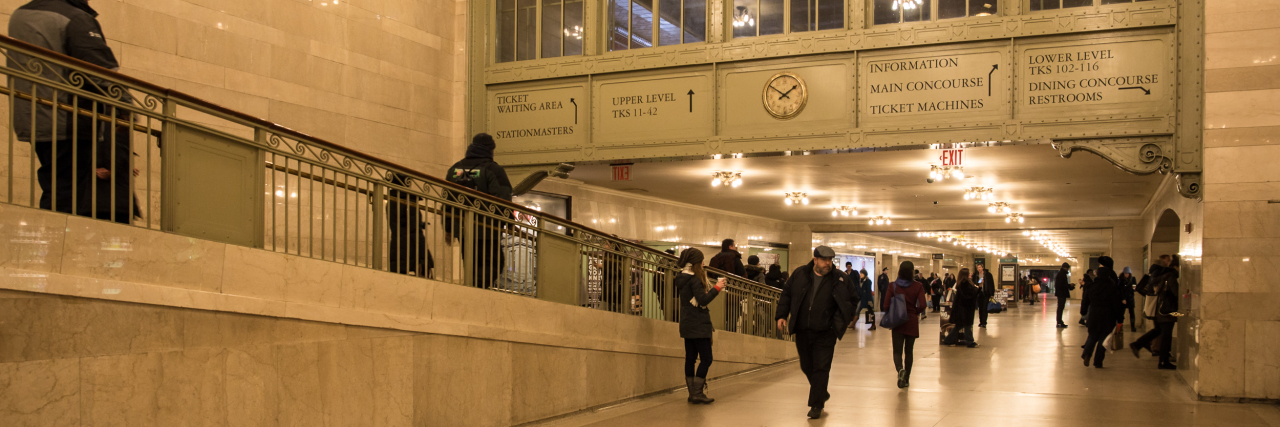The ramp is believed to have been invented by the Ancient Egyptians. It is said they used some form of ramp to transport materials while building the Pyramids. However, the Ancient Greeks were also stewards of the early ramp. They constructed a paved ramp called the Diolkos that was used to drag ships across the Isthmus of Corinth, a narrow land bridge that connected the Peloponnese Peninsula with the rest of mainland Greece.
In the 1600s, Galileo showcased the inclined plane experiment as one of the first great simple machines. He ran an experiment to examine Aristotelian ideas of motion. He used a simple board that had a groove down the middle and rolled a small metal ball. This experiment changed many ideas about motion and led a lot of the studies around acceleration.
Despite these early ideas of the ramp, it didn’t begin officially assisting people with disabilities until 300 years after Galileo. The famous Vanderbilt family were building New York’s Grand Central Terminal to operate newly electrified tracks which would help optimize their rail service. The Minnesota based architecture firm Reed & Stem were hired and created the very first stairless station when it opened in 1913.
The engineers built mock-up ramps at various slopes and examined all types of travelers to determine the optimum grade. People with prams, luggage and wheelchairs came from all around to use Grand Central Terminal with ease. In fact, President Franklin D. Roosevelt, who was hiding his disability and wheelchair from the public, used a secret platform with a lift from the lower level platforms which took him directly to the presidential suite at the Waldorf-Astoria Hotel. Even though Roosevelt advocated for rehabilitation and accessibility, he wasn’t willing to showcase it. But he was willing to take advantage of the accessibility of this incredible station.
Disability started to become normalized in the 1940s and 1950s when many veterans came home from the wars with mobility-related injuries. People began to take notice that the world wasn’t build to accommodate wheelchairs. In the 1960s the disability rights movement began to take hold, with some protesting and smashing pavements to create their own ramps. At the University of California, they were laying down tarmac in the middle of the night to make more ramps.
In the 1970s, there was a major service provider called Rehabilitation International. While people with disabilities were allowed to attend the meetings, they weren’t permitted to speak until 1980, when there was a large protest and the Disabled Peoples’ International was born. In 1981 when they had their first conference, they decided disability was more than just a condition to be treated by medical professionals. They became united in claiming self-determination and self-representation to overcome the social oppression they faced. In 1986, disability rights advocacy was recognized as an area to be funded under Australia’s Disability Services Act and since then, we have slowly begun moving in the right direction. Nevertheless, accessibility is still sometimes a point of contention.
Many believe Swiss architect Le Corbusier is to blame for this. Le Corbusier believed in standardizing design and created a fictitious character of average height and dimension called Le Modulor. Entire cities were based around this character, which has left the majority of architecture not accessible to anyone in a wheelchair. Even though ramps are now available, many have made makeshift attempts that aren’t truly able to be used by someone in a wheelchair.
According to the Australian National Construction Code, a wheelchair ramp must have a minimum width of 1 meter and have a maximum incline of 1 in 8 (for every 8 m traveled horizontally, the ramp can go up 1 m). However, in so many places this isn’t the case, with people believing a flat piece of wood will make it “accessible.” Sadly, it seems many architects believe a ramp should be hidden to the side, which has left us with these terrible ideas that it isn’t really significant. Yet, to a person in a wheelchair, it is the most vital thing to know they can enter and exit a building safely.
Sue Woodward, the Director of Advocacy for New York’s Center for Disability Rights explains it perfectly, “We shouldn’t have to start a lawsuit to have the same access as everyone else. We don’t want to sue, we just want to get in.”
This story originally appeared on Suzanne Stays.
Getty image by LittleNY.

